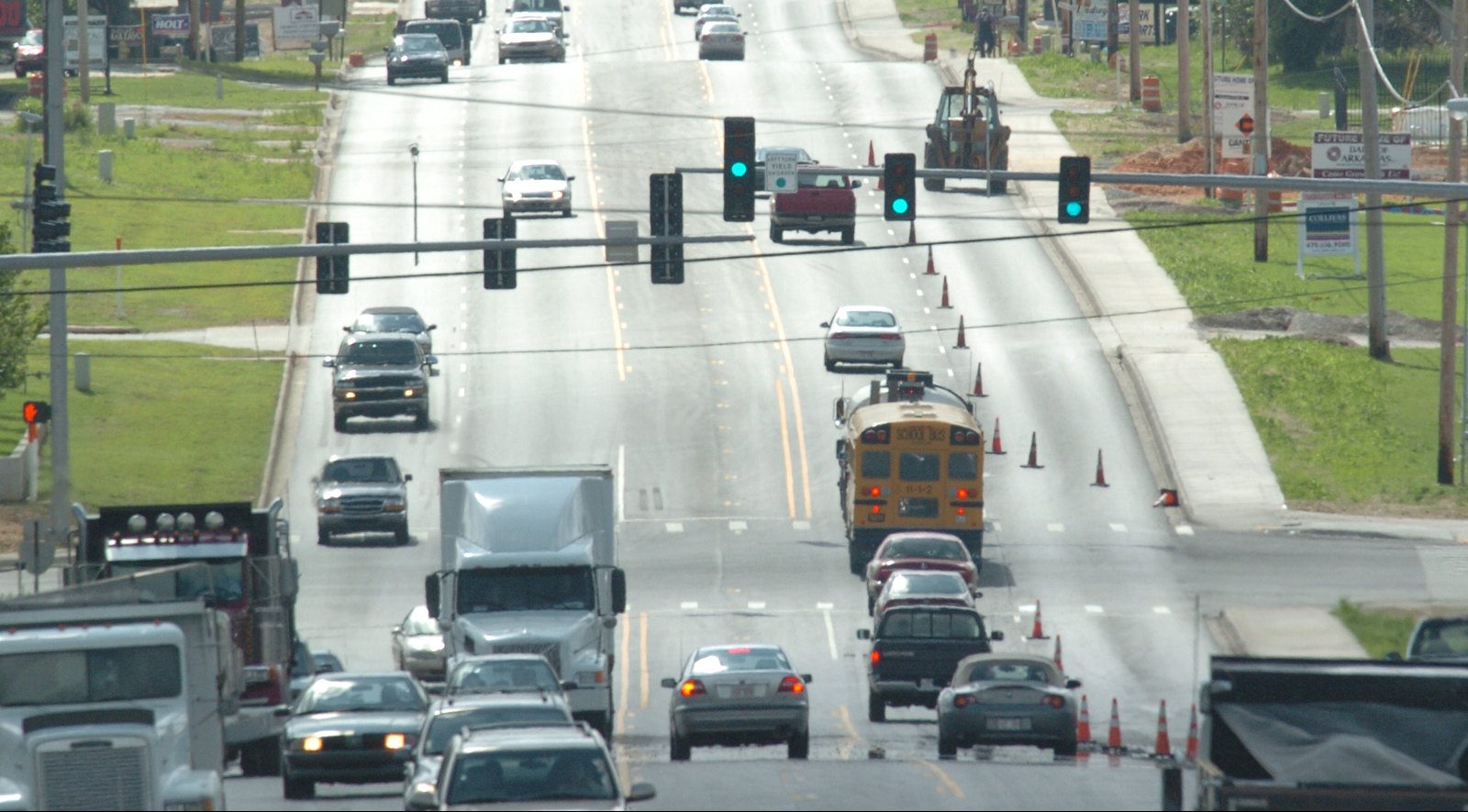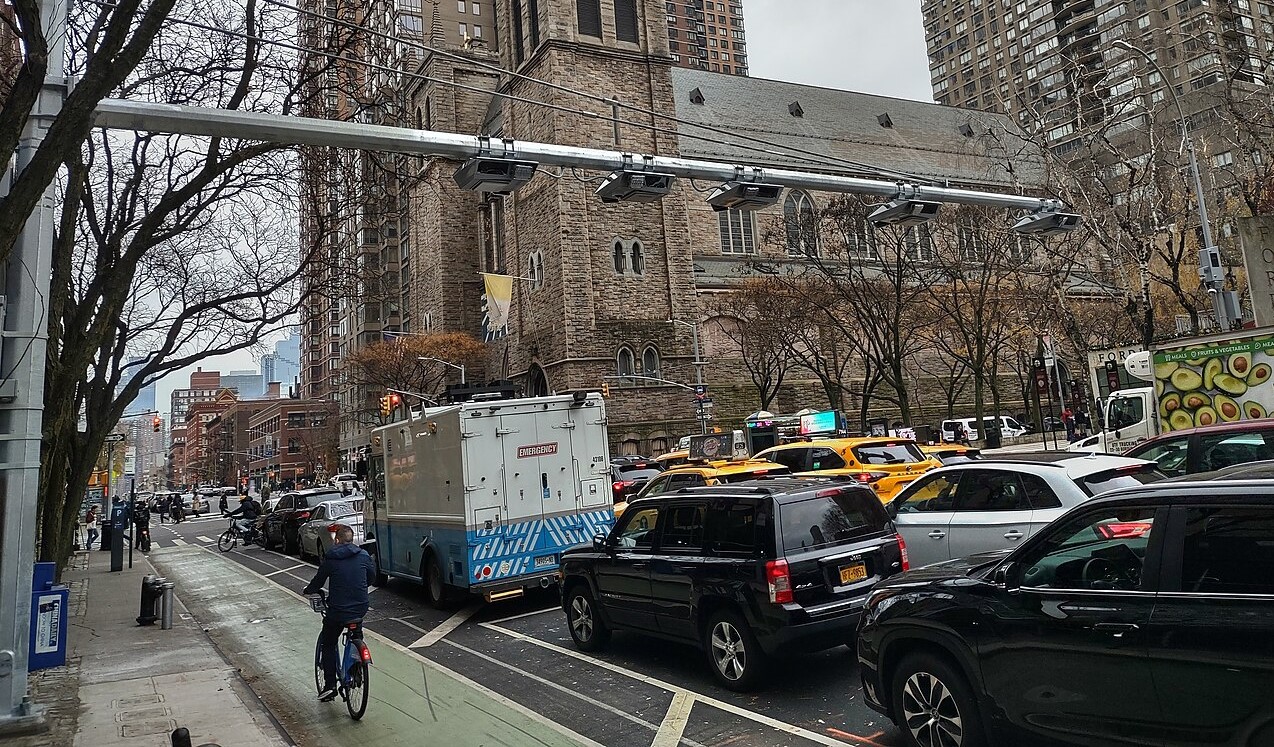Who, exactly is designing America’s notriously deadly road network — and how on earth do they keep getting away with it?
On today’s episode of The Brake, we’re talking to traffic engineer, academic and now author, Wes Marshall, whose new book — “Killed by a Traffic Engineer: Shattering the Delusion that Science Underlies Our Transportation System” — unpacks the mountain of wildly outdated, severely limited, and often downright non-existent research that underlies so much of our national road design manuals.
More important, though, Marshall’s book also unpacks the more fundamental reasons why engineers keep widening lanes and saying no to crosswalks, even when the manuals give them permission to do something better — which, more often than not, they do.
Listen in, and read an excerpt from “Killed by a Traffic Engineer” here.
The following excerpt has been condensed and edited for clarity.
Streetsblog: I usually like to give my audience an elevator pitch from authors. But in this case, actually, I’d like you to give me two elevator pitches. How do you pitch “Killed By a Traffic Engineer” to advocates and non-professionals like me who might be geeks for this stuff, but don’t necessarily know the ins and outs of your profession? And how do you pitch it to other traffic engineers who you are, well, accusing of murdering in the title?
Wes Marshall: I mean, luckily, for whatever reason, the book cover and the book title has touched a nerve with the advocacy community, so I haven’t had to pitch it very much. But when people do ask me, what I try to start off with was just the idea of linking it to medicine. Doctors have been around for 5,000 years, and you can argue [that] for the first 1,000 of those years, they killed more people than they saved. What I’m saying is that traffic engineering is only 100 years old, and we’re still in that stage where we’re killing more people than we save.
And part of it is that often, we don’t know any better. We’re doing what we’re taught. And we don’t know that a lot of what we’re doing is not steeped in as much science as we think. We think there’s 100 years of science behind it. But there’s not.
So what I’m doing for [advocates] is giving them some insight into what really is behind it — helping them, maybe, become more effective at arguing with an engineer. Because engineers are really good at shutting down conversations and saying things that make people that aren’t in that sort of engineering world — well, maybe “feel dumb” is too strong, but feel like they don’t have any way to contradict what [the engineers are] saying. So there’s ammunition in there for that group of people.
On the other side, I try to let the engineers know: “Don’t take the cover too seriously. I’m not trying to blame you necessarily. I’m trying to say that this is sort of what we’ve been given.” When you’re a young engineer, it’s like they hand you a half-dozen of these 1,000-page manuals, and you just assume whoever wrote these things knows more than you do. And you have to just rely on that.
I’m trying to give [engineers] information to show them that there’s much more to it than what’s in those manuals. And there’s also just sort of fundamental things we do wrong, that takes us away from the ability to fix problems. I talk a lot about human error and the idea that a lot of our crashes get blamed on that. But when you just think more logically about what these people are actually doing, you get a very different answer — and one that, I think, puts the onus back on engineers to do better.
Streetsblog: One of the things I learned from the book was that road design manuals aren’t always supported by science— and they’re not always these legally binding, set in stone, Ten Commandments-style Bibles. You wrote: “The reality is that our current guidelines aren’t what is stopping traffic engineers from building safer streets, there is already plenty of flexibility built into the guidelines — that is, if traffic engineers are willing to use it.” I was hoping you could just explain that tension a little bit; why do we have so many guidelines that are pointing us in the wrong direction on safety, and so many engineers who fail to use their better “engineering judgment” to point things in the right direction?
Marshall: Well, “engineering judgment” is sort of the umbrella that good engineers can use to do something different than what is seen in the guidelines and all the manuals.
So the MUTCD — the Manual Uniform Traffic Control Devices — is probably the most like a “standard.” We have the AASHTO Green Book, and we have all these other books, but those are really more guidelines. I talk [in the book] about how engineers sometimes like to refer to them as “standards” when they really are more guidelines. But even [when it comes to] the MUTCD — which is much more like a standard, because obviously we can’t have green stop signs in one city and purple and another — even in that book, I think I counted 167 times when they use the phrase “engineering judgment.”
So when an engineer tells you that, for instance, you need a “warrant,” or so many pedestrians crossing in front of the school in order to put in a crosswalk — well, we can always use engineering judgment to trump that warrant and do what we think is necessary, regardless of what the guidelines are telling us. But very few engineers are willing to do this. And part of it is they’re scared of liability.
So [in the book] I go through sort of the rational process; how they can almost treat it like a tactical urbanism experiment, and protect themselves from the liability boogeyman. But bigger picture, [engineers] have a lot more power than we let people know. [Sticking to the guidelines] helps us stay above the fray a little bit; we can kind of put our decisions off in the manuals as opposed to on to ourselves. And it’s easier that way.
But I think what we’re learning now is that [our road design guidelines] haven’t led to the safety that we should have by now. So we need to do better. And part of it is engineers taking the power we’ve been given to do what is not in the manuals, that will make it safer.






